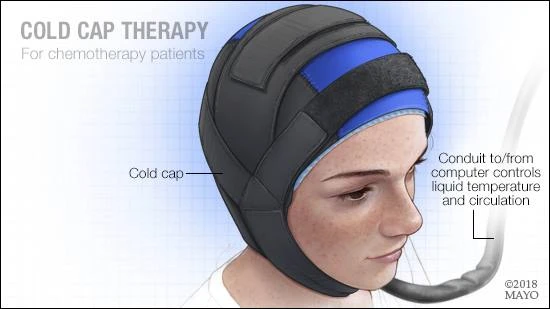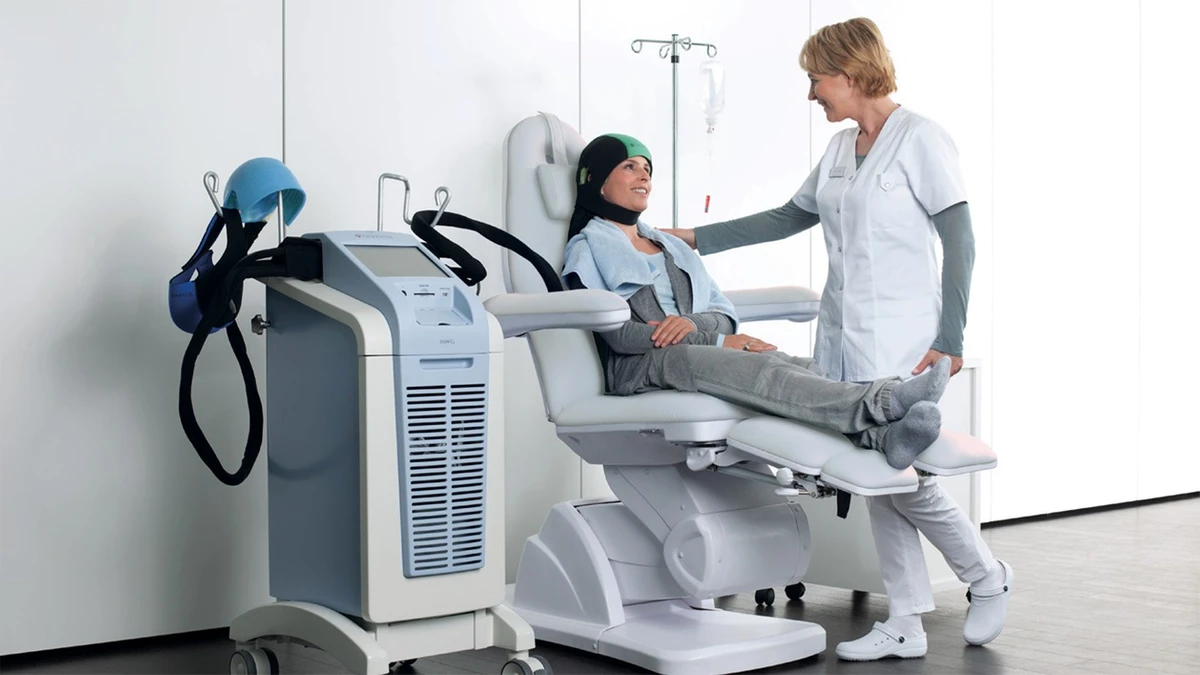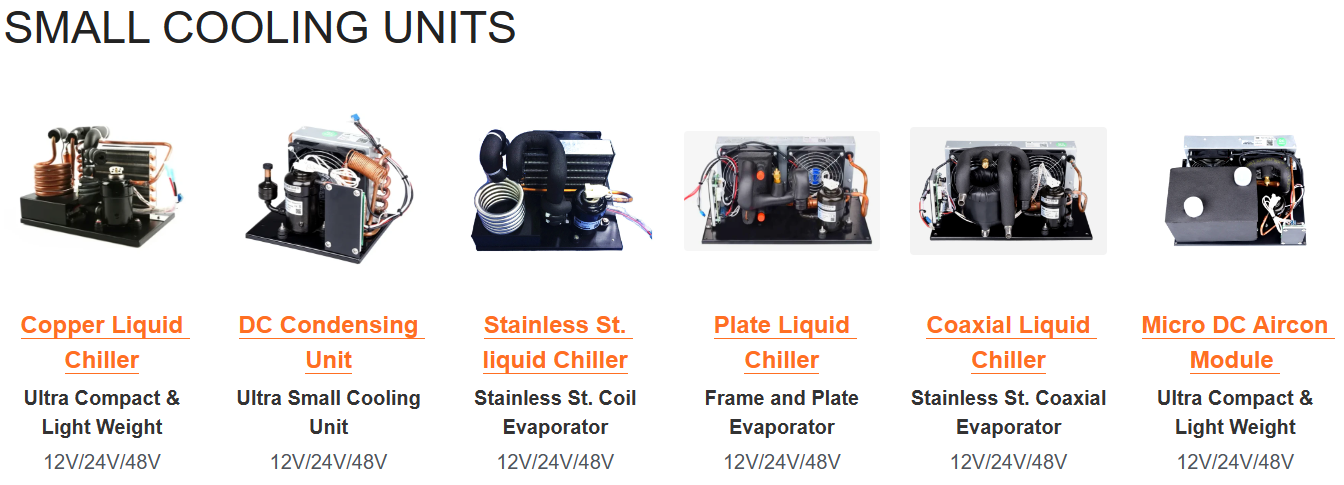Introduction

"RIGID is a miniature refrigerated compressor innovation leader in China. We keep looking for novel solutions in compact and portable cooling systems. We capture new technologies in mobile and compact cooling systems."
In the realm of cancer treatment, the emotional and physical toll of chemotherapy is often accompanied by the fear of hair loss. Enter scalp cooling—a technique designed to combat this concern and preserve patients' locks during treatment. By utilizing innovative technology such as cold caps, cancer patients can now explore options that may help them maintain their hair and boost their confidence throughout their journey.
Understanding Scalp Cooling for Chemotherapy
Scalp cooling is a method employed during chemotherapy sessions to minimize hair loss, a common side effect of many cancer treatments. It involves using a cold cap that cools the scalp, thereby constricting blood vessels and limiting the amount of chemotherapy drugs reaching hair follicles. This approach has sparked curiosity among patients asking, Do cold caps work for cancer patients? The answer lies in ongoing research and patient experiences that shed light on its effectiveness.
The Role of Plate Liquid Chillers
At the heart of effective scalp cooling systems are plate liquid chillers, which play a crucial role in maintaining optimal temperatures for cold cap therapy. These devices circulate chilled liquid through specialized caps designed to fit snugly on the head, ensuring consistent cooling during chemotherapy sessions. Unlike standard beauty machine chillers used in salons for aesthetic treatments, plate liquid chillers are engineered specifically for medical purposes, providing targeted cooling to protect hair follicles from damage.
Benefits of Cold Caps for Cancer Patients
The benefits of using cold caps extend beyond just hair preservation; they also contribute significantly to emotional well-being during treatment. Maintaining one's appearance can have profound psychological effects on cancer patients, allowing them to feel more like themselves amidst an otherwise challenging time. Additionally, understanding how much a chemo cold cap costs is essential for budgeting purposes; many find that investing in this therapy pays off not only in terms of hair retention but also in overall quality of life during chemotherapy.
What Is Cold Cap Therapy?

Cold cap therapy is a treatment designed to help cancer patients maintain their hair during chemotherapy. This innovative approach utilizes specialized caps that cool the scalp, thereby reducing the amount of chemotherapy drug that reaches hair follicles. The primary goal is to preserve hair and boost patients' confidence during a challenging time.
Definition and Purpose
Cold cap therapy refers to the use of cold caps or scalp cooling systems during chemotherapy sessions to minimize hair loss. The purpose of this therapy is straightforward: to provide cancer patients with an option that can help them retain their hair, which can be a significant concern for many undergoing treatment. By understanding what cold caps are and how they function, patients can make informed decisions about their treatment options.
How It Works
The mechanism behind cold cap therapy involves cooling the scalp before, during, and after chemotherapy infusions. This cooling constricts blood vessels in the scalp, reducing blood flow and limiting the exposure of hair follicles to toxic chemotherapy drugs. Essentially, it’s like putting your head in a beauty machine chiller but with a serious twist—it's all about saving those precious locks!
Effectiveness for Hair Preservation
Research indicates that approximately 50-70% of users experience significant hair retention throughout their treatment cycle. However, individual results may vary based on factors such as drug type and personal biology; thus, while many ask Do cold caps work for cancer patients?, it's essential to manage expectations realistically.
Do Cold Caps Work for Cancer Patients?

Research and Studies
Numerous studies have explored the effectiveness of cold caps for cancer patients undergoing chemotherapy. Research indicates that scalp cooling can significantly reduce hair loss by constricting blood vessels in the scalp, thereby limiting the amount of chemotherapy drugs that reach hair follicles. A meta-analysis of multiple clinical trials found that approximately 50-70% of participants using cold cap therapy experienced minimal to no hair loss, making a compelling case for its efficacy.
However, it's important to note that results can vary based on several factors, including the type of chemotherapy regimen and individual patient response. While many studies show positive outcomes with cold cap therapy, further research is still needed to fully understand its long-term effects and best practices in different treatment scenarios. This ongoing investigation aims to provide clearer answers regarding how much a chemo cold cap costs in terms of overall effectiveness versus financial investment.
Patient Testimonials
The real-world experiences of patients often tell a powerful story about the impact of cold caps for cancer patients. Many individuals report feeling empowered by using cold cap therapy during their treatment journey; they appreciate being able to maintain some semblance of their former appearance during such a challenging time. Testimonials frequently highlight how this method not only helps preserve hair but also boosts confidence and emotional well-being throughout chemotherapy.
Patients have shared diverse stories about their journeys with scalp cooling systems—some expressing joy at being able to keep most or all of their hair intact while others emphasize the psychological benefits gained from using these innovative devices. Despite varying degrees of success among users, many agree that even partial preservation is better than complete loss when navigating through chemotherapy treatments.
Limitations and Considerations
While there are numerous benefits associated with cold cap therapy, it’s crucial to consider its limitations as well. One significant factor is that not all types of chemotherapy drugs are equally affected by scalp cooling; some regimens may lead to more substantial hair loss regardless of whether a patient uses a cold cap or not. Additionally, individual responses can differ widely—what works wonders for one person may yield disappointing results for another.
Another consideration involves logistics: using a chemo cold cap requires careful planning and coordination with healthcare providers since it must be administered at specific times during treatment sessions. Patients should also factor in financial aspects; while some insurance plans cover costs associated with this treatment option, others may not fully reimburse expenses related to purchasing or renting equipment like plate liquid chillers designed specifically for this purpose.
Exploring the Costs of Cold Cap Therapy

When it comes to cold cap therapy, understanding the costs involved is crucial for cancer patients considering this option. The financial aspect can be a significant factor in the decision-making process, especially when balancing treatment expenses and personal budgets. With various options available, it’s essential to navigate through pricing, insurance coverage, and budgeting strategies effectively.
How Much Does a Chemo Cold Cap Cost?
The cost of a chemo cold cap can vary widely depending on several factors such as location, provider, and duration of use. On average, patients might find themselves spending anywhere from $300 to $1,500 for a complete treatment cycle involving cold cap therapy. This range typically includes rental fees for the equipment or purchasing the caps outright along with any necessary accessories for effective scalp cooling during chemotherapy sessions.
It's important to note that while some clinics may offer packages or discounts for multiple treatments, prices can fluctuate based on individual needs and specific therapies used during chemotherapy. For those wondering do cold caps work for cancer patients?, investing in this technology might not only save hair but also provide emotional relief from the stress of hair loss associated with cancer treatments.
Insurance Coverage Options
Navigating insurance coverage for cold cap therapy can often feel like deciphering an ancient script—confusing! While some insurance plans may cover part or all of the costs associated with cold cap therapy due to its potential benefits in hair preservation during chemotherapy, many do not recognize it as an essential treatment expense. It's advisable for patients to contact their insurance providers directly to inquire about specific coverage options related to cold caps for cancer patients.
Some states have enacted laws requiring insurers to cover certain types of scalp cooling treatments; however, this varies significantly across different regions and policies. Patients should also explore flexible spending accounts (FSAs) or health savings accounts (HSAs) as potential ways to alleviate out-of-pocket expenses related to their treatment.
Budgeting for Scalp Cooling
Budgeting effectively for scalp cooling requires careful planning and consideration of both immediate and long-term financial implications. Patients should begin by estimating how many sessions they will need based on their chemotherapy regimen and then calculate expected costs accordingly—keeping in mind that additional accessories might be necessary throughout the process.
It’s wise to set aside funds specifically earmarked for these treatments while also exploring alternative financing options if needed; after all, investing in a cold cap could mean more than just preserving hair—it might enhance overall quality of life during challenging times faced by cancer patients undergoing treatment.
The Technology Behind Plate Liquid Chillers

Mechanism of Action
The mechanism of action for plate liquid chillers involves precise temperature control and efficient heat transfer. When a cold cap is applied to the scalp, the chilling effect constricts blood vessels, thereby limiting the amount of chemotherapy drugs that reach hair follicles. This targeted cooling helps protect against damage and has led many to ask, Do cold caps work for cancer patients? The answer often lies in their ability to create this protective barrier.
RIGID's Liquid Cooling Solutions
RIGID's liquid cooling solutions are at the forefront of scalp cooling technology. Designed specifically for use with cold caps for cancer patients, these systems ensure consistent cooling throughout treatment sessions. With features that prioritize patient comfort and ease of use, RIGID’s solutions are a popular choice among those looking to preserve their hair while undergoing chemotherapy.
Comparison with Beauty Machine Chillers
While beauty machine chillers are often used in salons for various aesthetic treatments, they differ significantly from plate liquid chillers designed for scalp cooling during chemotherapy. Beauty machine chillers typically focus on surface-level applications and may not achieve the same deep tissue cooling necessary for effective cold cap therapy. For patients seeking answers about how much a chemo cold cap costs or its effectiveness, it's important to understand that specialized equipment like plate liquid chillers offers superior performance tailored specifically for oncology needs.
Using Scalp Cooling Systems

When it comes to the practical application of scalp cooling systems, understanding how to utilize them effectively can make a significant difference for cancer patients undergoing chemotherapy. Cold cap therapy has gained traction as a viable option for hair preservation during treatment, but it's essential to follow a structured approach to maximize its benefits. This section will guide you through the step-by-step process of using these systems, ensuring patient comfort and proper maintenance.
Step-by-Step Guide
Using a cold cap for cancer patients involves several crucial steps that need to be followed closely. First, prior to chemotherapy sessions, patients should prepare by having their cold caps ready and chilled adequately; this often requires pre-cooling them in a freezer or using a plate liquid chiller designed specifically for this purpose. During the treatment, the cold cap is applied directly to the scalp at least 30 minutes before chemotherapy begins and must remain in place throughout the session and sometimes even afterwards.
Next comes the actual administration during chemotherapy for scalp cooling; it’s important that patients remain still while wearing their caps, allowing the cooling effect to work effectively on hair follicles. The duration of use can vary based on individual protocols or specific product recommendations, so following instructions is key. After removal, patients should handle their hair gently and avoid heat styling tools for optimal results.
Patient Comfort and Administration
Comfort is paramount when using scalp cooling systems like cold caps for cancer patients; they can feel quite chilly initially but should not cause excessive discomfort or pain. To enhance comfort levels during administration, many clinics offer cozy blankets or additional warm clothing options while undergoing treatment—after all, who doesn’t appreciate being wrapped up snugly? Effective communication with healthcare providers about any discomfort experienced can lead to adjustments that improve the overall experience.
Additionally, it’s worth noting that some beauty machine chillers are used alongside traditional cold caps for added comfort; they help regulate temperature more evenly across the scalp area. Patients are encouraged to discuss their experiences with staff members who are trained in administering these therapies since they can provide tips on how best to manage any side effects associated with prolonged cooling treatments.
Maintenance and Care for Systems
Proper maintenance of scalp cooling systems ensures longevity and effectiveness when utilizing cold cap therapy during chemotherapy sessions. Regular cleaning of equipment is essential—this includes sanitizing caps after each use and checking connections if using advanced technologies like plate liquid chillers or beauty machine chillers regularly used in salons or clinics. Following manufacturer guidelines on care will help maintain optimal performance over time.
Moreover, storing cold caps properly between uses helps retain their efficacy; this means keeping them at recommended temperatures without exposing them unnecessarily to room heat or moisture which could compromise their function during subsequent treatments. For those considering investing in these systems long-term due to ongoing treatment needs, understanding how much does a chemo cold cap cost? becomes an important part of budgeting—not only initial purchase but also ongoing maintenance costs as well.
Conclusion

In wrapping up our exploration of scalp cooling and cold cap therapy, it’s crucial to recognize its potential benefits for cancer patients undergoing chemotherapy. The use of a cold cap for cancer patients has gained traction as a viable option for hair preservation during treatment, providing hope and comfort to many. As we’ve seen, understanding the mechanisms behind these therapies, including the role of plate liquid chillers and beauty machine chillers, can help patients make informed decisions about their care.
Key Takeaways on Scalp Cooling
Scalp cooling is an innovative approach that aims to mitigate hair loss during chemotherapy by lowering the temperature of the scalp. This method has shown promise in various studies, leading many to ask, Do cold caps work for cancer patients? The answer leans towards yes; numerous testimonials highlight successful hair retention experiences among users of cold cap therapy.
When considering How much does a chemo cold cap cost?, it’s important to factor in both the financial implications and potential insurance coverage options available. While some may find it an added expense, others view it as a worthwhile investment in their self-esteem and emotional well-being during treatment. Ultimately, the key takeaway is that scalp cooling can be a significant part of the journey through cancer treatment.
RIGID and Cooler Heads Collaboration
The collaboration between RIGID and Cooler Heads represents a leap forward in developing effective solutions for scalp cooling using advanced plate liquid chillers. By combining expertise from both companies, they aim to enhance the effectiveness of cold cap therapy while ensuring patient comfort throughout the process. This partnership not only focuses on technological advancements but also emphasizes patient education regarding how these systems work.
RIGID's commitment to innovation ensures that their liquid cooling solutions are at the forefront of this emerging field, making scalp cooling more accessible than ever before. As awareness grows around cold caps for cancer patients, collaborations like this will continue to pave the way for improved outcomes in hair preservation during chemotherapy treatments.
Future of Cold Cap Therapy in Cancer Treatment
Looking ahead, the future of cold cap therapy appears promising as ongoing research continues to validate its effectiveness and broaden its applications within oncology care. With more studies confirming that Do cold caps work for cancer patients?, healthcare providers are increasingly likely to incorporate these methods into standard treatment protocols. Innovations in technology will likely lead to even more efficient systems that enhance patient experience while minimizing discomfort.
Moreover, as awareness about costs associated with How much does a chemo cold cap cost? grows alongside insurance coverage discussions, more patients may seek out these options as part of their treatment plans. In conclusion, with continued advancements and greater acceptance within medical communities, we can expect scalp cooling technologies like those from RIGID and Cooler Heads to play an integral role in supporting cancer patients through their journeys.